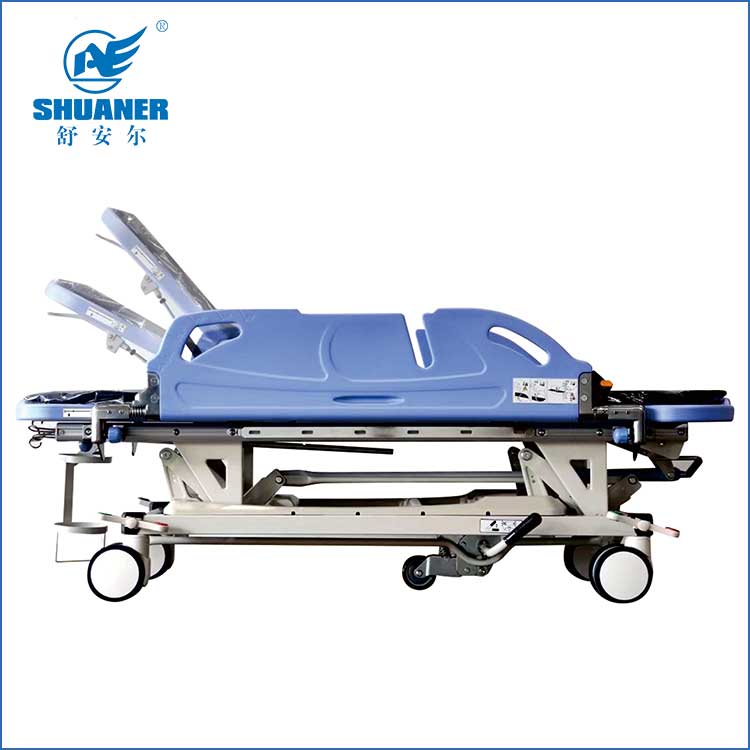- English
- Español
- Português
- русский
- Français
- 日本語
- Deutsch
- tiếng Việt
- Italiano
- Nederlands
- ภาษาไทย
- Polski
- 한국어
- Svenska
- magyar
- Malay
- বাংলা ভাষার
- Dansk
- Suomi
- हिन्दी
- Pilipino
- Türkçe
- Gaeilge
- العربية
- Indonesia
- Norsk
- تمل
- český
- ελληνικά
- український
- Javanese
- فارسی
- தமிழ்
- తెలుగు
- नेपाली
- Burmese
- български
- ລາວ
- Latine
- Қазақша
- Euskal
- Azərbaycan
- Slovenský jazyk
- Македонски
- Lietuvos
- Eesti Keel
- Română
- Slovenski
- मराठी
- Srpski језик
Precautions for medical hydraulic emergency transfer folding stretcher
2024-07-05
There are several important things to note when using the medical hydraulic emergency transfer folding stretcher:
Operation skills: Make sure the user has the correct operating skills and training. The operator should understand the functions of the stretcher, how to use the hydraulic system, and safe operating procedures.
Loading and unloading: Be careful and gentle when loading and unloading patients. Make sure the patient's head and body are properly supported and fixed to avoid unnecessary movement or bumps.
Adjustment and fixation: When using the hydraulic system to adjust the height and angle of the stretcher, it should be done gradually to avoid sudden adjustments that may cause discomfort or instability to the patient. Make sure that the fixings on the stretcher are firm and reliable to ensure the safety of the patient during the move.
Cleaning and disinfection: It is very important to clean and disinfect the stretcher regularly, especially if it has been in contact with patient body fluids after use or may be contaminated. Follow the cleaning and disinfection guidelines for medical equipment to ensure that the stretcher meets hygiene standards.
Inspection and maintenance: Regularly check all parts and hydraulic systems of the stretcher to ensure that they are working properly and safely. If any damage or abnormality is found, stop using it immediately and repair or replace it.
Applicable environment: Understand and comply with the applicable environment and usage restrictions of the stretcher. Ensure that it is used under the correct environmental conditions and avoid contact between the stretcher and inappropriate chemicals or extreme temperatures.
Avoid overloading: It is strictly forbidden to overload the stretcher and ensure that the maximum load capacity specified by the manufacturer is not exceeded. Overloading may cause damage or instability of the stretcher, which in turn affects the safety of the patient.
In summary, the use of the medical hydraulic emergency transfer folding stretcher requires care and caution, and the correct operating procedures and safety measures must be followed to ensure the safety and comfort of patients and medical staff.




